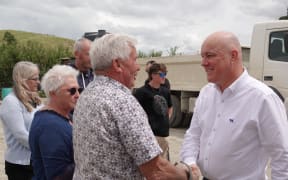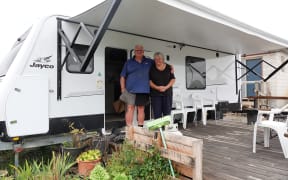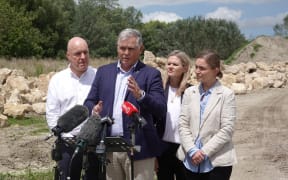The trauma caused by Cyclone Gabrielle continues to manifest in different ways a year on. Some people are ready to talk, and others aren't, throwing themselves into the ongoing clean-up. In Hawke's Bay, mental health support is scarce, and health professionals say they need guaranteed, continuous funding to make a difference for their communities. Reporter Kate Green has more.
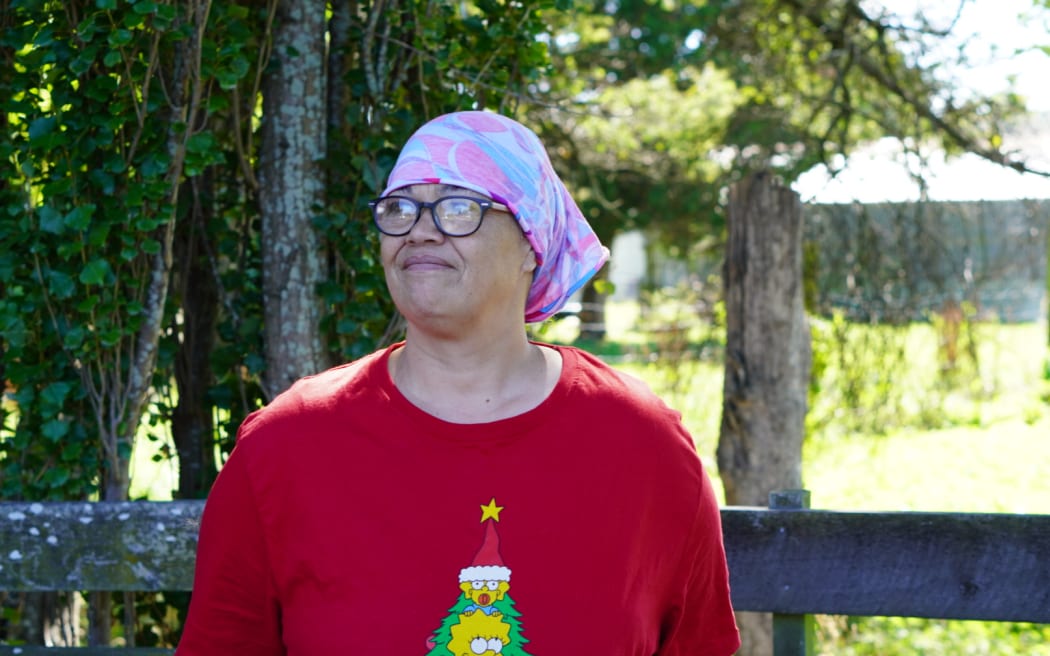
Blue Tiger, who lives in Wairoa, says she struggles with a feeling of survivor's guilt. Photo: RNZ / Kate Green
It's been a year since Cyclone Gabrielle swept through the town of Wairoa, and local woman Blue Tiger says she now feels survivor's guilt.
She and her two kids and two cats had just moved up from Napier when the storm hit, and many of their belongings - including irreplaceable things like her kids' school work - were still in the garage.
Her house escaped the flood, but the garage was inundated.
She said they were among the lucky ones, with plenty of Wairoa families still displaced.
"I watch my neighbours now, and they still can't move into their houses. I hear my neighbour out there every day lifting the floorboards off the inside of his house," she said.
"All I can do is offer them a meal, I don't know what to do. I don't want to be intrusive, and I know that they're processing things their way."
She said it was hard for families who were still displaced, living in the back pockets of family or friends - even some tents would go a long way to give them space and privacy.
Sometimes, it was about making do. In her own garden, Tiger had built a rockery with displaced rocks which had floated around in the floodwater, and she had planted a vegetable garden in her daughter's damaged drum kit.

When life gives you rocks, make a rockery. Blue Tiger has redone her back garden using rocks displaced by the cyclone. Photo: RNZ / Kate Green
Some things still weren't back to normal. Tiger said locals had noticed the Wairoa river flowed higher and faster than it used to during high tide.
"That gives a lot of people anxiety, that the whole frame of the river has changed now."
And their everyday life had changed, too, in preparation "for next time".
"We now build everything off the ground," she said. "I would honestly like my whole front yard at least metre off the ground. Our shelving's all off the floor, we don't put anything on the floor anymore. Our shed, everything's now hanging off the roof."
Otago University research fellow Amber Logan said she'd spoken with people who woke from dreams in the night, compelled to return to their flood-damaged homes, and would drive back home at 2am to stand in the ruins.
She said it was partly a reality check, as well as a bid for connection with their old home when they're having trouble settling elsewhere, and behind it, a mixture of longing and alienation.
These people were "trying to have some stability in life, trying to feel at home somewhere, and feeling a little bit embarrassed about that," she said.
Logan's own place in Haumoana flooded during the cyclone. Her house wasn't affected, but she was without power for some time, and a year on, she said she was still cleaning up the property.
Her neighbours weren't so fortunate, the floodwaters sweeping through their homes.
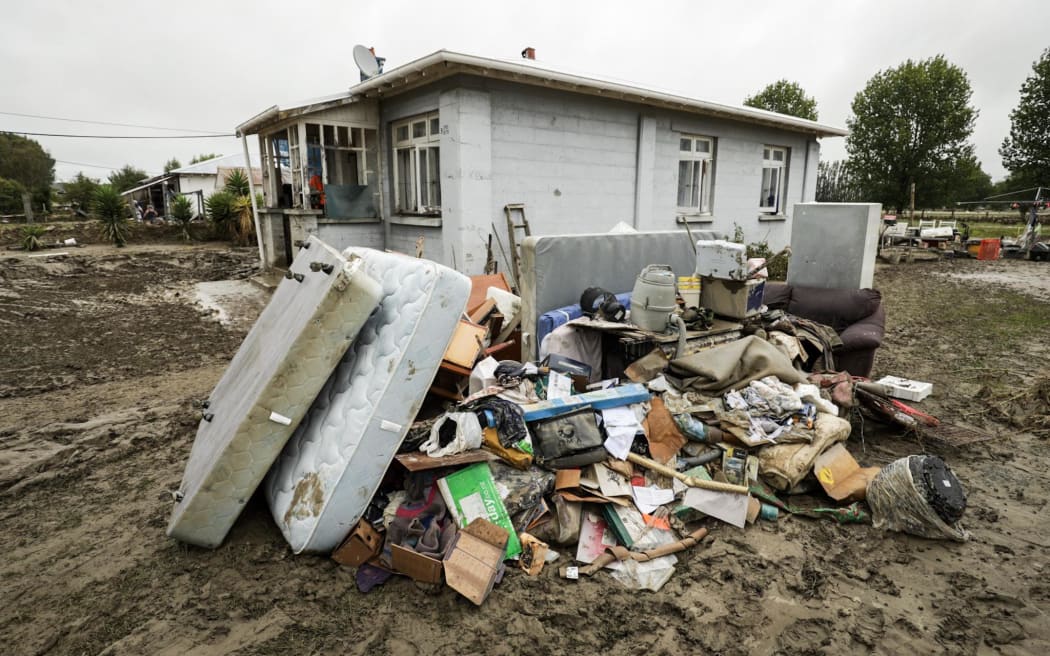
It's been a year since the clean-up began in Wairoa. Photo: Nathan McKinnon
She said it was exactly the kind of event which made people vulnerable to traumatic stress disorder. A new phrase had been coined in the United States - "post-traumatic stress injury" - to emphasise that the brain had been injured by the event.
It would often start as shock, then triggers would emerge - it could be as simple as rain on the roof, and grow into distress at the mention of a weather forecast.
Reminders of the storm were everywhere, especially in places like Eskdale and Pakowhai, and some people turned to unhealthy forms of self-medication, like drugs and alcohol to cope.
Reports of death by suicide still filtered through the community, a phenomenon which was "hard to get a handle on".
But, "from my own experience on the ground, I would support that, that we do have higher levels of self-harm and suicidality in the population", Logan said.
Logan said it was any number of factors that stopped people from reaching out; an element of shame, a reluctance to go through the pain of talking about it, even a lack of awareness of the help available.
"People don't know that it's treatable," she said. "They feel, oh well, one day I'll get better. They don't realise that we do have effective treatments for trauma."
And even if people sought help, there was still a shortage of health professionals in the region.
"We need better infrastructure for supporting people. There's a good, what I'd call a lay-infrastructure at the community level, of community people who are out there helping, but when it comes to professional help, we don't have enough."
And while some funding had trickled in, there were concerns among mental health experts about its continuity.
Napier Family Centre chief executive Kerry Henderson said appointments for couples counselling were through the roof, as stress and trauma found their way out in personal relationships.
Requests for the centre's support in schools for tamariki were steady.
Often people were experiencing anxiety and sleeplessness, and they noticed a spike in appointments for counselling after heavy rain.
"We're seeing the impact of the cyclone and the cost-of-living crisis coming through significantly," she said. "People who were making ends meet three years ago aren't now."
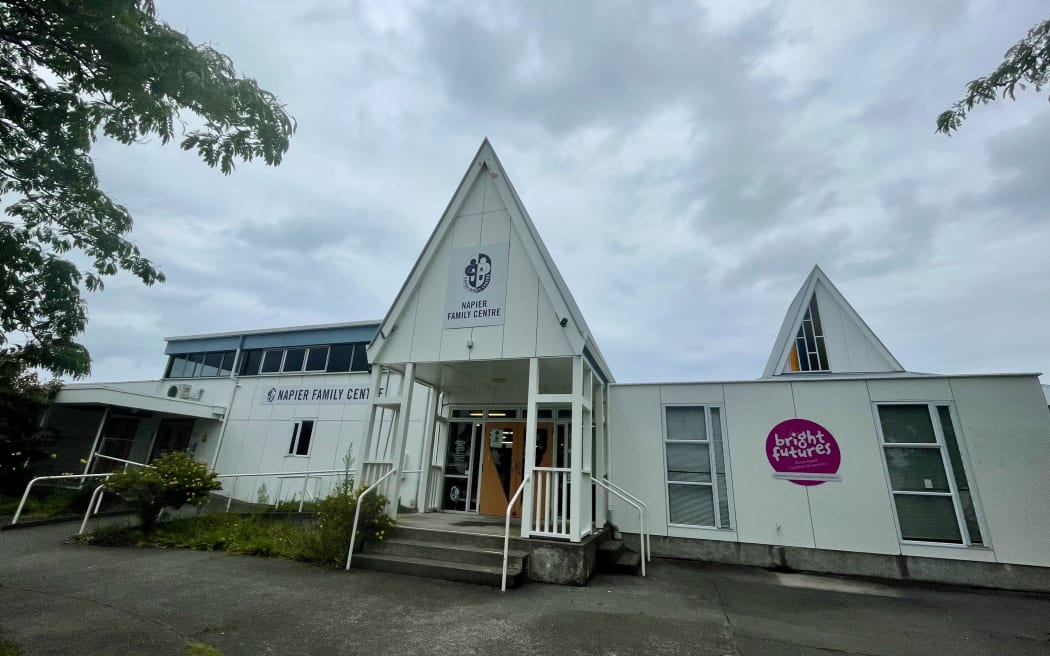
The Napier Family Centre. Photo: RNZ / Kate Green
The centre now had a dedicated counsellor for cyclone-related trauma. "Her job is to go out into the community, and be available in the community for the community, and start breaking down some of those barriers and letting people know we're here," Henderson said.
While plenty of people weren't ready to talk, "we want them to know that when they are ready, we're here", she said. "It's non-judgemental, its confidential, it is free."
She warned the wave of people needing mental health support was still to come, if past disasters like the Canterbury earthquakes were anything to go by.
What was needed, she said, was a continuous funding stream. Currently, there was $1 million in government funding ringfenced for mental health support post-cyclone, shared by 75 agencies which needed be spent by 30 June.
"People don't fit into boxes," Henderson said. "You can't then say, 'Okay whānau, get all your emotions out right now because come 1st of July, you've just got to put it back in a box because there's no funding,' and life doesn't work like that."
She said she would be keeping a close eye on the government's annual budget, come May.
She hoped there would be a continuous funding stream put in place, to give them some surety about what services they could continue to provide.
Te Whatu Ora Hawke's Bay cyclone recovery manager Pania Shingleton said in a statement she was aware this was a long-term area of need. There had been several tranches of funding for mental health support totalling $13 million, including $2m for seven counselling sessions for anyone affected by the weather events.
She said the Napier Family Health Centre had received funding through this particular package.

